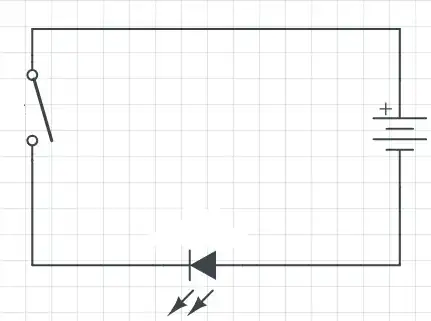I'm a beginner, this question might be silly, but please bear with me.
What is the difference between the two following circuits,

What does the transistor do? The LED glows in both the cases if we drop the switch.
I'm a beginner, this question might be silly, but please bear with me.
What is the difference between the two following circuits,

What does the transistor do? The LED glows in both the cases if we drop the switch.
In a simple circuit like you show, there is no advantage. You are using a mechanical switch to activate an electronic switch (the transistor) to let current flow through the LED.
The actual point in doing this is for you to learn how transistors work.
Once you can make a transistor function as a switch under your command using a mechanical switch, it is a very small step to making the transistor switch in response to an electronically generated signal. Say, the output of a microprocessor.
The circuits you have drawn are almost guaranteed to destroy your LED and transistor.
Transistors have limits on the amount of current that is allowed to flow through the base to the emitter. Your circuit will allow nearly all the current your battery is capable of delivering to flow through the base/emitter junction. This will destroy the transistor.
The same applies to the LED. LEDs are rated for a certain maximum current. Above that, they will burn out and stop lighting up. Both of your circuits will allow the full current of the battery through the LED. Unless you are using very small batteries (like button cells,) the LEDs will receive enough current to quickly burn out.
Search this site for hints on calculating the needed value for a series resistor to limit the current through the LED.
Search this site for examples of using transistors to switch LEDs.
The transistor in this circuit acts as a switch. The transistor here is operating in common emitter mode meaning there are two different circuits i.e. emitter base circuit and collector emitter circuit. The current flowing in the base emitter circuit controls the current flowing in the collector emitter circuit. Their relation given by Ic= ß*Ib where ß is the property of transistor, Ic is the current in collector-emitter circuit, Ib is the current in emitter-base circuit. In the circuit, the led is part of the collector emitter circuit. So the LED glows only in the presence of Ic. However, if there is no Ib, there is no Ic. So think of Ib as your hand. The switch is operated based on your hand. When the base current is present (analogous to closing the switch with hand), there is Ic meaning led glows up. But when there is no Ib(analogous to opening the switch) there is no Ic so the LED doesn't glow... it's the basic use of transistor in your circuit. But there are many more limitations you have to consider in this circuit like maximum current through the LED and many more.. Hope this helps!!!